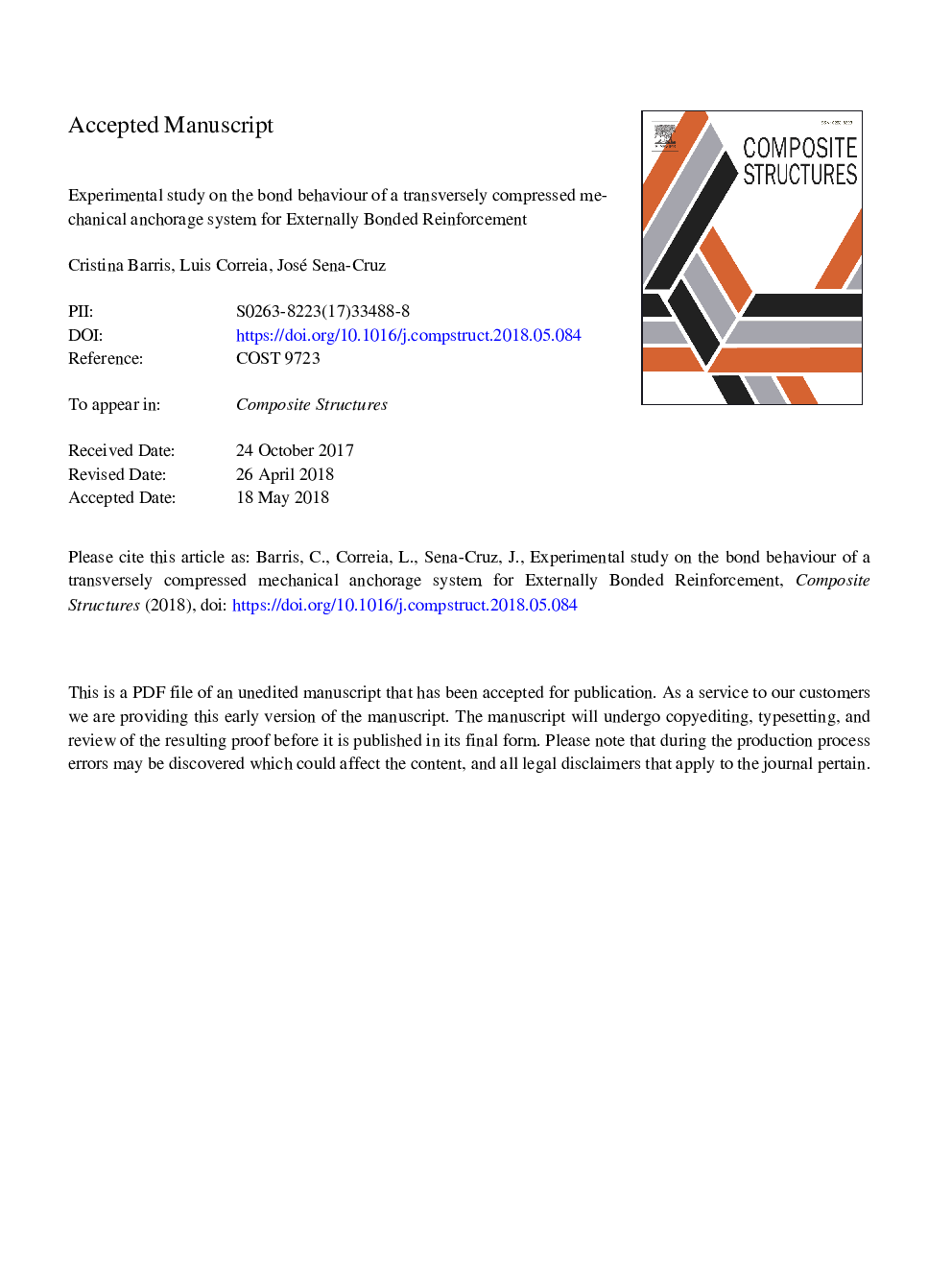| Article ID | Journal | Published Year | Pages | File Type |
|---|---|---|---|---|
| 6703029 | Composite Structures | 2018 | 43 Pages |
Abstract
This paper presents an experimental programme aiming at studying the bond behaviour of carbon-FRP (CFRP) for externally bonded reinforcement (EBR) systems mechanically anchored to concrete. Eleven large scale pull-out tests were carried out using concrete blocks of 200â¯mmâ¯Ãâ¯500â¯mmâ¯Ãâ¯800â¯mm. In each block a single CFRP laminate was mounted using the EBR technique and mechanically fixed to concrete through a commercial mechanical anchorage with different levels of transverse compression. The blocks were tested under a pull-out configuration until failure. The study of the CFRP EBR system comprises not only the mechanical anchorage but also the subsequent CFRP EBR laminate bonded to concrete. The debonding load is observed to be dependent on the laminate width, as expected, and a good relationship between the experimental results and analytical predictions is found. A model of the local bond shear stress-slip law in the bonded zone is adopted and calibrated to the experimental results taking into account the roughness of the concrete surface. Moreover, the effects of the laminate width and the compressive stress level on the anchorage effectiveness are evaluated. Results show that the mechanical anchorage generally provides adequate transverse compression of the CFRP laminate to concrete surface.
Related Topics
Physical Sciences and Engineering
Engineering
Civil and Structural Engineering
Authors
Cristina Barris, LuÃs Correia, José Sena-Cruz,
